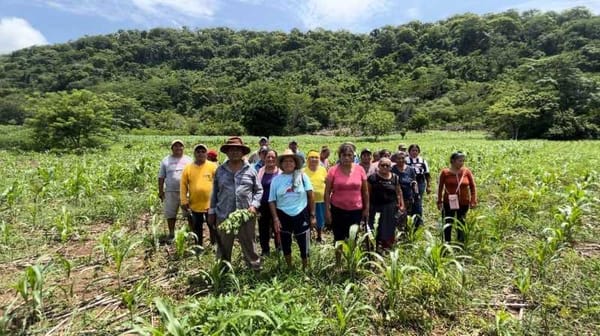Five revolutions that changed the world
The following is a list of five revolutions that marked a before and after in the world and completely changed it.

"Speak up! Speak up for human rights!" These are two of the main phrases heard when people generate revolution. Here are the five revolutions that changed the course of world history.
To change "the very principle of government" or to modify some things of the current constitution is, according to Aristotle, the two ends that revolutions can seek. The idea of turning around an established order has accompanied humanity throughout its history and some have been a turning point in history. Therefore, here is a list of five revolutions that marked a before and after in the world, and changed it completely.
1. Freedom guiding the people
This is the name of Eugène Delacroix's painting with which the French Revolution is usually identified - erroneously since the painting portrays the Revolution of 1830 - which was perhaps the most important historical and social event in the modern world.
The Revolution lasted for a decade (from 1789 to 1799) and founded the foundations of today's Rule of Law, in which all citizens are equal before the law, as well as modern republics by changing the axis of power from a divine or hereditary order to a society where the people making the decisions and the only queens are Liberty, Equality, and Fraternity, as the famous motto of this period states.
Among an endless number of reasons, the main causes of the Revolution were the weariness for the privileges to which the aristocratic class clung and the mistakes of the monarchy, headed by Louis XVI and who would be guillotined in 1793 in the Plaza de la Revolución.
This period, however, was steeped in violent episodes such as the murder of Robespierre, a member of the Public Salvation Committee and the most prominent leader of the Revolution. Moreover, paradoxically, its end comes when Napoleon Bonaparte acquires most of the powers as First Consul, initiating a dictatorship.
Despite the various episodes and moments of terror experienced during the Revolution, it was this period that gave rise to the founding of the First French Republic, the abolition of slavery in the country, and the Declaration of the Rights of Man and Citizen.
2. When NO won in Chile
It was on Wednesday, October 5, 1988, that, during the military dictatorship of Augusto Pinochet, a referendum was held: the national plebiscite of Chile. The objective was to decide whether or not Pinochet remained in power until March 11, 1997. The triumph of the NO meant the convocation for 1989 of joint presidential and parliamentary democratic elections, which began the period called "transition to democracy".
But... what happened in both options? If YES won, the president-elect took office on March 11, 1989, for an eight-year term. But if, on the other hand, he won the NO, Augusto Pinochet's presidential term would be extended for another year as would the functions of the Governing Board. Ninety days had to be called for presidential and parliamentary elections.
The media were the protagonists of this event. For the first time in history, television strips were broadcast for both political positions. There were spots of 15 minutes each. Each strip was rotated in order: first the YES strip and then the NO strip; the next day, on the contrary.
The NO campaign was led by Eugenio García and had the support of Jorge Cucurella and publicist Ernesto Merino. The logo of the concert was a rainbow where the union was the main symbol of the political spectrum. In addition, the great song of "Chile, joy is already coming" had been achieved in such a way that those of the YES, hummed it unconsciously. YES got 43.01% and NO won with 54.71%.
3. The student marches that ended in the resignation of President Rafael Reyes in 1909
Colombia had just lost the territory of Panama through a treaty with the United States, the country was in crisis after the 'War of a Thousand Days' and President Rafael Reyes had closed Congress, abolished the position of vice president, and banished the opposition from the cabinet, but trying to remain in power, more specifically on March 3, 1909, a demonstration was held in the capital led by students who demanded the resignation of the president.
Reyes unleashed persecution against his opponents and suspended constitutional liberties and although many students were imprisoned, the marches did not stop. He finally handed over General Jorge Holguín Mallarino to the presidency on June 9 of that year and then fled to Europe.
4. Colombian seamstresses of the 20th century
It all began with the slow, industrialized development of Bello, that little town no more than 30 minutes from Medellín, and with the creation of the Compañía Antioqueña de Tejidos Bello, a company where good working conditions were practically nil and labor exploitation was a flag: men, women, young people and children agreed to spend their time in its facilities in exchange for miserable wages.
Although it was the women who bore the brunt: they had to work more than 10 hours a day, their wages were 270% lower than men's, and they had to endure all kinds of sexual abuse by their supervisors, who with the help of the Catholic Church, managed to manipulate massively the behavior of these workers to prevent the echoes that came from the Russian Revolution from making them go against the system.
However, by 1919, great changes took place in Colombia: 15 strikes were declared by workers of different guilds that failed to change the oppression of those who preceded them, but in 1920, Bathsheba Espinal, along with other women spinners, led the most organized strike of the time, even though foremen, priests, and mayors wanted to break them.
And what did they demand? They demanded a halt to sexual abuse, "an increase in salaries, a reduction in working hours, the abolition of the ban on wearing shoes (they had to work barefoot for the employer's comfort), and the right to time for lunch," can be read in the daily La Izquierda. All of them reached agreements after 20 days on strike.
Although it is true that, although for many, the changes achieved at that time were not significant, they were representative and marked a rupture, first, in the role that women had at that time, where they were expected to remain receptive and silent before the words of men; and second, in the role and right that the people have to demonstrate and demand from the government, their own welfare, the welfare of the citizenry.
5. The Arab Spring
On 17 December 2010, Mohamed Bouazizi set himself on fire in protest at the abuses he suffered as a result of the confiscation of his fruit stall. Bouazizi died three weeks later, but his protest was the spark that set the Tunisian people on fire to take to the streets to demand the resignation of Zine El Abidine Ben Ali, who resigned on 11 January 2011, after 24 years as a dictator.
This was just the first piece of a social domino that resonated in more than 15 countries in Africa and the Middle East and became known as the Arab Spring. Like Ben Ali, the dictator Hosni Mubarak in Egypt also resigned after massive marches against him. The conflict, which began peacefully, escalated violently in countries such as Libya, where protests were violently suppressed, causing NATO intervention and the subsequent death of President Muammar Al-Qadhafi.
This series of protests are the first in the Arab world to have as its denominator, in most cases, the transition to a democratic and secular government. Moreover, they were the first to demonstrate the convening power of social networks.




